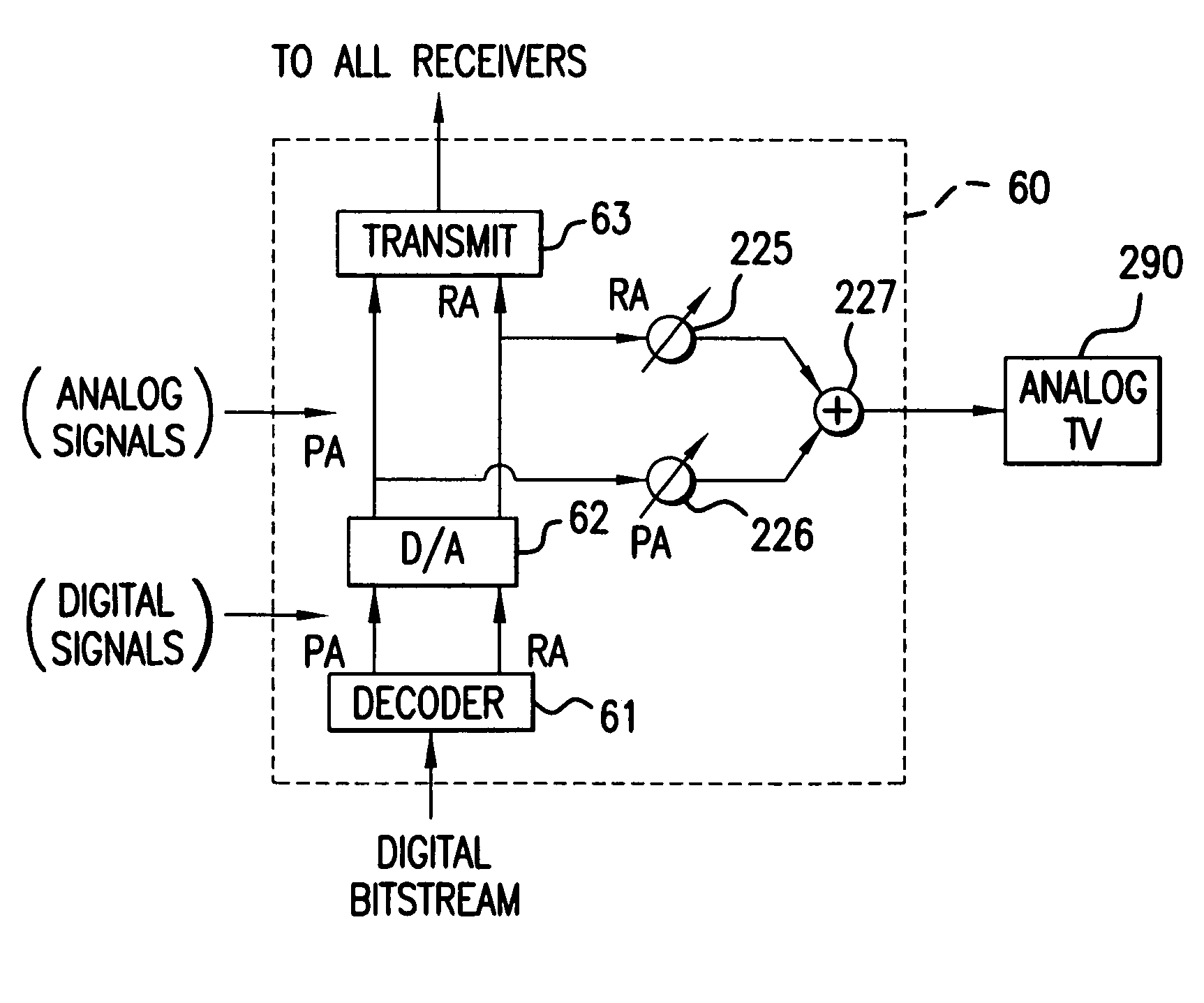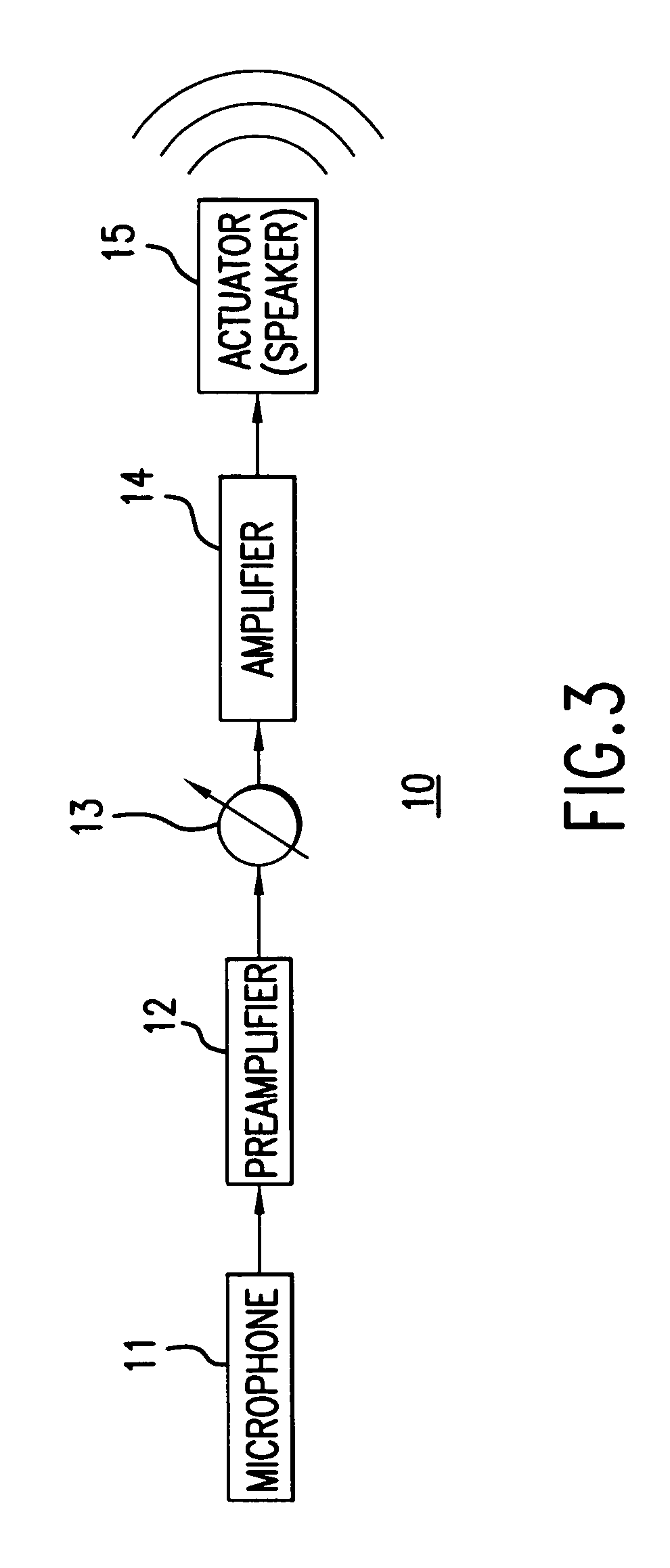Voice-to-remaining audio (VRA) interactive hearing aid and auxiliary equipment
a technology of interactive hearing aids and hearing aids, applied in the field of processing audio signals, can solve the problems of permanent hearing impairment, temporary hearing impairment, and hearing loss of one's hearing, and achieve the effect of improving hearing and hearing
- Summary
- Abstract
- Description
- Claims
- Application Information
AI Technical Summary
Problems solved by technology
Method used
Image
Examples
Embodiment Construction
[0034]Embodiments of the present invention are directed to an integrated individual listening device and decoder. An example of one such decoder is a Dolby Digital (DD) decoder. As stated above, Dolby Digital is an audio compression standard that has gained popularity for use in terrestrial broadcast and recording media. Although the discussion herein uses a DD decoder, other types of decoders may be used without departing from the spirit and scope of the present invention. Moreover, other digital audio standards besides Dolby Digital are not precluded. This embodiment allows a hearing impaired end-user in a listening environment with other listeners, to take advantage of the “Hearing Impaired Associated Audio Service” provided by DD without affecting the listening enjoyment of the other listeners. As used herein, the term “end-user” refers to a consumer, listener or listeners of a broadcast or sound recording or a person or persons receiving an audio signal on an audio media that i...
PUM
 Login to View More
Login to View More Abstract
Description
Claims
Application Information
 Login to View More
Login to View More - Generate Ideas
- Intellectual Property
- Life Sciences
- Materials
- Tech Scout
- Unparalleled Data Quality
- Higher Quality Content
- 60% Fewer Hallucinations
Browse by: Latest US Patents, China's latest patents, Technical Efficacy Thesaurus, Application Domain, Technology Topic, Popular Technical Reports.
© 2025 PatSnap. All rights reserved.Legal|Privacy policy|Modern Slavery Act Transparency Statement|Sitemap|About US| Contact US: help@patsnap.com



